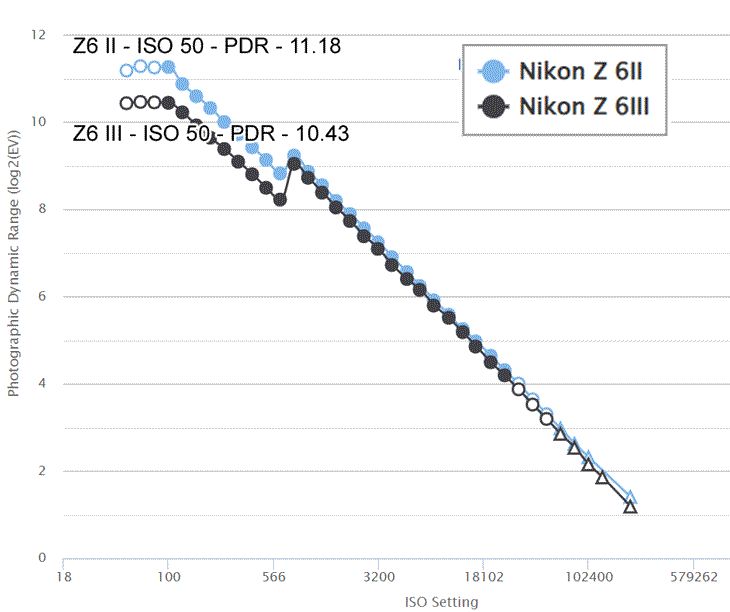
Recently, results from a dynamic range test published on March 6 by the Photons to Photos website show that the dynamic range of the recently announced Nikon Z6 Mark 3 camera is not as good as that of the Nikon Z6 Mark 2. Moreover, if you compare it with the Nikon Zf, you will notice that both the Nikon Z6 Mark 2 and the Zf have very similar dynamic ranges. However, the dynamic range of the Nikon Z6 Mark 3 is not up to the mark.
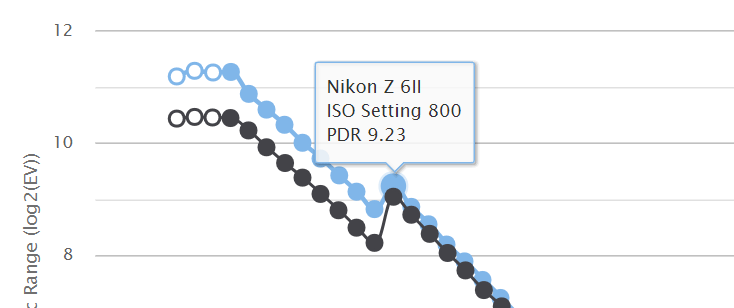
Specifically, the lower ISO dynamic range up to ISO 800 differs in the Z6 Mark 3 and Z6 Mark 2, with the Z6 Mark 3 camera sensor suffering from detail loss. So, suppose you are using your camera, specifically the newly announced Z6 Mark 3, in an ISO range of 100 to 800. In that case, you have to face detail loss, specifically in the shadowed area, which cannot be recovered as much as we have the capability in the Z6 Mark 2.
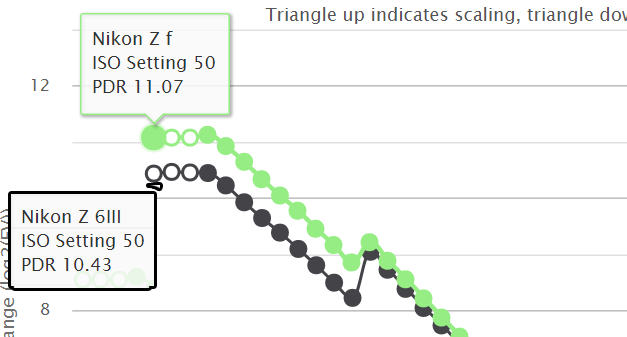
The Reason Why It’s Happening
The reason is clear since the Nikon engineers used the partially stacked CMOS sensor in the Nikon Z6 Mark 3 camera. Now, what happened in the previous generation sensor was that the readout speed was slow. Although it was not that good for sports and wildlife photography, due to the slower readout speed, each photodiode in the sensor was able to observe the incoming light perfectly. Now, in the partially stacked CMOS sensor, what they have done is they have replaced the circuitry just below the photodiodes in a similar manner to what a stacked sensor has. But due to the partial update, they somehow managed to increase the sensor’s readout speed. However, in the very same situation, the photodiodes are not able to grab the proper amount of light in a short period / High Speed, which is 12.4 milliseconds approx compared to the readout speed of the Nikon Z6 Mark 3 camera sensor which is approximately somewhere around 22 milliseconds.
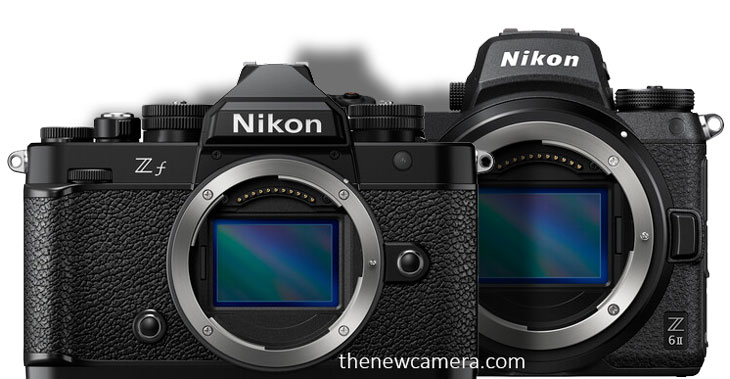
Nikon Zf from Amazon.com | Nikon Z6 II Amazon.com
So having a slower readout speed is not always a negative part of your camera system.
Having a slower readout speed helps to grab the incoming light properly. Suppose you are not in a hurry or not always shooting sports or wildlife. In that case, it is recommended to have a camera sensor with a slightly slower readout speed, specifically in Nikon cameras like we have in the Zf camera. The Z6 Mark 3’s sensor is significantly faster but despite that fact, we can extract the maximum dynamic range possible for the given scene with the Zf.
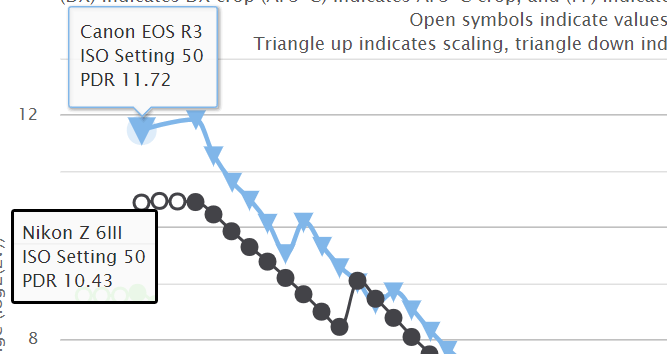
Comparing the Nikon Z6 Mark 3 Camera Sensor Dynamic Range with Canon R3 24 Megapixel Stacked CMOS Sensor
When we compare the dynamic range of the Canon R3 camera with the Nikon Z6 Mark 3, which is of course not that much feasible due to the price difference between the two cameras, the R3 has a similar resolution of 24 megapixels and a fully developed stacked CMOS sensor. Now in the test, we have found that the Nikon Z6 Mark 3 camera performs quite worse than the Canon R3 sensor. Surprisingly, when we also included the Nikon Z6 Mark 2 in the test charts, we were surprised that the Canon R3 camera’s 24-megapixel full-frame sensor is even performing better in the lower range compared to the Z6 Mark 2 camera sensor, specifically in terms of dynamic range.
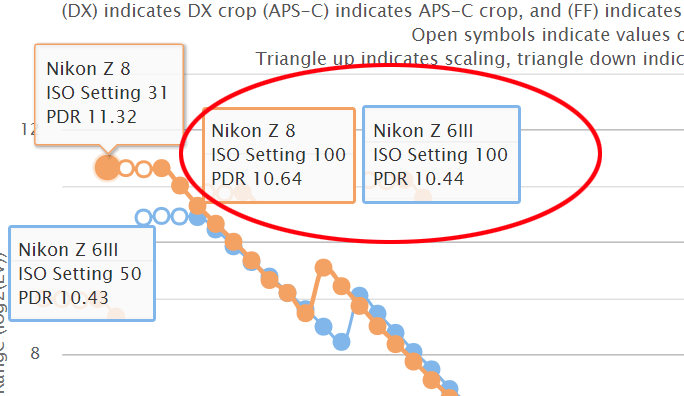
Comparing the Nikon Z6 Mark 3 Camera Dynamic Range with the Nikon Z8 Camera
In the dynamic range test score against the Nikon Z8 camera, we have found that in the very base ISO range starting from the base ISO 32 to 50 to 80, the dynamic range test score of the Z8 camera is better than that of the Z6 Mark 3. But as soon as you cross the base ISO 100, the dynamic range of both cameras becomes very similar when compared to each other. So that’s a fact that even if you have a camera with that much amount of pixel resolution, the dynamic range of the Z8 camera remains limited or performs well up to ISO 100 only. After that, it is very similar to the Z6 Mark 3. And if you compare it with the Z6 Mark 2, you will notice that the Z6 Mark 2 camera does have a slightly better dynamic range test score compared to the Z8.
Follow us on our social pages FACEBOOK | TWITTER | INSTAGRAM, If you have time –>see more Sony Alpha Rumor
source photonstophotos








